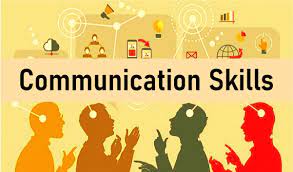Leadership and effective communication go hand in hand when it comes to fostering a positive and productive team or organizational environment. Here are some key points to consider for leadership and communication in teams and organizations:
- Lead by Example: Be a role model for effective communication. Demonstrate active listening, clarity in your messages, and respect for others’ opinions. Your communication style sets the tone for the entire team.
- Establish Clear Communication Channels: Establish clear channels of communication within the team or organization. Determine the most appropriate methods for different types of communication, such as team meetings, email updates, or project management tools. Ensure that these channels are easily accessible and understood by all team members.
- Practice Transparent and Open Communication: Foster a culture of transparency and openness. Clearly communicate goals, expectations, and progress updates. Share relevant information with the team, and encourage team members to share their thoughts, concerns, and ideas openly.
- Clear and Concise Communication: Effective leaders communicate clearly, conveying their message in a concise and understandable manner. Use simple language, avoid jargon, and ensure that your message is received as intended.
- Active Listening: Actively listen to the perspectives and ideas of team members. Pay attention to verbal and nonverbal cues, and ask clarifying questions to ensure understanding. Show genuine interest in what others have to say and create an environment where everyone’s voice is heard.
- Provide Constructive Feedback: Offer constructive feedback to team members. Focus on specific behaviors or actions, and provide suggestions for improvement. Frame feedback in a positive and supportive manner to encourage growth and development.
- Active Listening: Good communication is a two-way street. Encourage active listening within your team by paying attention to others, asking clarifying questions, and providing feedback. This promotes open dialogue and helps team members feel heard and valued.
- Adapt Communication Styles: Recognize that different team members have diverse communication styles and preferences. Adapt your communication approach to accommodate these differences. Be flexible in your communication style to ensure effective understanding and engagement.
- Set Clear Expectations: Clearly communicate your expectations regarding team performance, individual roles, and responsibilities. Ensure that team members understand their objectives and how they contribute to the overall success of the project or organization.
- Encourage Collaboration and Teamwork: Promote a collaborative environment where team members work together towards common goals. Encourage cross-functional collaboration, knowledge sharing, and cooperation to foster innovation and problem-solving.
- Nonverbal Communication: Nonverbal cues, such as facial expressions and body language, play a significant role in communication. Be aware of your own nonverbal cues and interpret those of others to better understand their emotions and intentions.
- Empower and Delegate: Delegate tasks and responsibilities to team members, empowering them to take ownership and contribute to the team’s success. Clearly communicate expectations, provide necessary resources, and trust team members to deliver on their assigned tasks.
- Manage Conflict Effectively: Address conflicts or disagreements within the team promptly and constructively. Encourage open dialogue, actively listen to different viewpoints, and facilitate problem-solving discussions. Help team members find common ground and resolve conflicts in a respectful manner.
- Empathy and Emotional Intelligence: Effective leaders show empathy and emotional intelligence by understanding and considering others’ feelings, perspectives, and needs. This enables them to establish trust and build strong relationships within the team.
- Recognize and Appreciate Achievements: Acknowledge and appreciate the achievements and contributions of team members. Provide recognition and feedback for a job well done. Celebrate milestones and successes to boost team morale and motivation.
- Open and Transparent Communication: Foster a culture of open and transparent communication within your team and organization. Encourage team members to share ideas, concerns, and feedback openly. This creates an atmosphere of trust and collaboration.
- Continuously Improve Communication: Regularly evaluate the team’s communication processes. Seek feedback from team members and identify areas for improvement. Implement necessary changes and encourage ongoing learning and development in communication skills.
- Adaptability and Flexibility: Communication needs may vary depending on the situation and the individuals involved. Adapt your communication style to the needs and preferences of others, ensuring effective communication across diverse teams and organizational structures.
Leadership and effective communication are integral to building strong, engaged, and high-performing teams. By practicing these principles, you can create a positive communication environment that fosters collaboration, productivity, and success in your team or organization.
SHARE
